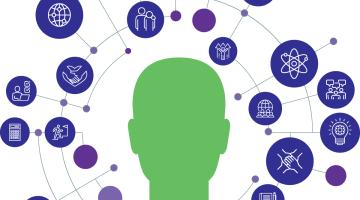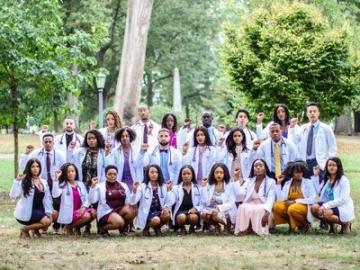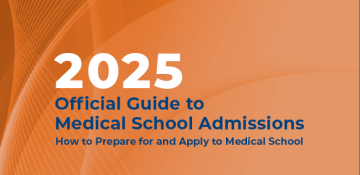New section
"There’s no magic formula for getting into medical school. I pursued a career as a pastor, volunteered internationally, came to love working with people in vulnerable circumstances, worked as an EMT, and drove cross-county; all this helped prepare me to be a driven, authentic medical student."
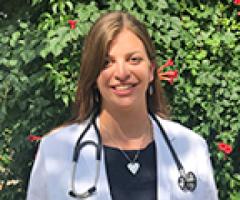
Medical School: University of Colorado School of Medicine
Expected Graduation Year: Expected Graduation — 2021
College & Major: Muhlenberg College, major in psychology with a minor in philosophy and religion
Editor’s Note: The opinions expressed in this article are those of the author and do not necessarily reflect the opinions, positions, or the polices of the AAMC or its members.
New section
Background
- The congregation at Amanda’s church — and the sense of community that came with it — heavily influenced her career path. It inspired her to pursue a career as an ordained minister.
- After completing her bachelor’s degree in psychology, Amanda enrolled in Young Adults in Global Mission, a year-long service program in South Africa designed to provide opportunities for young adults to confront issues of wealth and poverty, racial privilege, economic disparity, and globalization through the lens of faith.
- When she returned from South Africa, Amanda worked as a patient transporter at the Pocono Medical Center, which led her to consider a career in medicine.
- Amanda moved to Denver, Colorado, where she worked as a certified nursing assistant (CNA), pursued an emergency medical technician (EMT) certification, took prerequisite classes for medical school and volunteered with the Harm Reduction Action Center, Colorado’s largest syringe access provider.
- She also worked as a research assistant at the University of Colorado Hospital.
MCAT® Score/GPA/Coursework
Amanda’s undergraduate academics were strong; she had a GPA of 3.83 and had taken community college courses and earned AP credits prior to starting her undergraduate degree in psychology. Despite her academic success in college, Amanda’s pathway to medicine wasn’t direct; she explored her interests in ministry while in college and volunteering abroad, then through subsequent years and experiences, she soon realized that medicine might be a pathway to realize her goals of service, advocacy, and humanism.
Amanda completed pre-requisites at three different institutions: Community College of Aurora, Metropolitan State University of Denver and the University of Colorado Denver. Later, she enrolled in courses for genetics and biochemistry to increase her foundational science skills prior to matriculation in medical school. Although she excelled in her courses, she was concerned that her academic profile wouldn’t be as competitive or would give admissions committees pause, since she took courses at different institutions. “Many non-traditional students or those with non-science degrees who are considering applying to health professional schools often embark on initial career exploration and evaluate fit by completing prerequisite or other coursework at a community college. Amanda's coursework history was thoughtful and reflected her academic journey into medicine,” said Dr. Nichole Zehnder, former Assistant Dean for Admission and Student Affairs at the University of Colorado School of Medicine (UCSOM).
To prepare for the MCAT® exam, Amanda focused on studying the subjects she felt were her weakest: physics and chemistry. She also used study resources from a test-preparation company and took several online practice exams. Although she was concerned about the competitiveness of her MCAT score, it was well within the range of accepted applicants at the UCSOM.
Experiences
Attending church and being a part of a religious community was a big part of Amanda’s life while she was growing up. At the age of 17, she decided to pursue a career as an ordained minister. She thought a career in ministry would be a good fit because she loved “connecting with people and being with them through their most difficult challenges and most painful stories.”
After graduating from Muhlenberg College with a bachelor’s degree in psychology and minors in philosophy and religion, Amanda spent a year volunteering in South Africa through the Young Adults in Global Mission program. The program connects volunteers with communities around the world to live in relationship with local hosts, walking alongside them, “through joy, loss, heartache and everything in between.” Amanda first heard about the program from friends who had previously participated in it and learned more from a recruiter who visited her college campus.
During her time in South Africa, Amanda was immersed in a community healing from the scars of Apartheid. The model this program follows is one of “accompaniment”, in which volunteers are expected to walk alongside global partners in interdependence, mutuality, and solidarity. During this year, Amanda volunteered at a Lutheran Church doing office work, assisted with a local school’s drama and choir practices, and volunteered at an after-school program at a local library. “Working in this program made me aware of my deep appreciation of the interconnection of community, and the support that can be given when people are open and vulnerable to that connection,” she said.
When Amanda returned to the United States, she moved home to Pennsylvania and started working at the Pocono Medical Center as a patient transporter. What started out as a temporary job to save money provided an exclusive glimpse into the career environment she would soon embrace. As a patient transporter, Amanda found that medicine combined her interest in science and her ability to empathize with individuals facing tough and emotionally challenging trials. “I loved connecting with patients and seeing how our connection could help ease their pain and fear for a short period of time. I loved learning about the machines, medications, and procedures I was able to witness,” she said. Amanda’s work as a patient transporter also taught her that there are other unsung heroes on the healthcare team — for example, technicians, custodial workers, aids, transporters, and clerks — who care for patients every day and offer hope, comfort, and support.
After leaving her job as a patient transporter, Amanda embarked on a six-week, cross-country road trip with a friend, during which they visited friends in various cities and went camping and hiking in national parks along the way. Of all the places she visited, Denver, Colorado, particularly resonated with her: “I loved Denver for its proximity to the mountains, its interesting breweries, and the people I met there. I also had a friend in Denver who offered to be my roommate if I decided to move there, which seemed like a wonderful introduction to a new city.”
Seizing the opportunity to make a change, Amanda moved to Denver and researched formal training programs in the health care field. She enrolled in a three-week program to become a certified nursing assistant (CNA) and upon completion of the program, worked as a home health care aid. One year later she strategically transitioned to a CNA role in the emergency department of St. Joseph’s Hospital because of the hospital’s tuition reimbursement program. During this period, Amanda worked three 12-hour shifts per week and took classes, hoping to fulfill the prerequisites for either nursing school or medical school.
Looking to further develop her skills, Amanda completed an EMT course offered by the hospital network, and then immediately she was offered a position as an EMT at St. Joe’s. However, over time, she became frustrated by her lack of autonomy as an EMT, and she started seeking out opportunities in research.
Serendipitously, she found a paid research assistant position at the University of Colorado Hospital’s Emergency Department. Amanda was hired to a research pool position within the Emergency Department to work on several large studies. The largest study she worked on was funded by The Petal Network, a national organization that focuses its efforts on Acute Respiratory Distress Syndrome (ARDS). She assisted on one of their studies examining paralysis in impacting outcomes on patients who are intubated, and another that tested high dose vitamin D for patients at risk for ARDS. Amanda also worked on a third study that examined the connection between access to firearms and the risk of completed suicide in patients who were experiencing suicidal ideation in the emergency department.
After taking time to reflect on her prior experiences and training, Amanda decided her ultimate career goal was to become a doctor. Amanda had learned about the vital role of patient transporters, and she remained in awe of the important work of nurses and EMTs. But she sought the greater responsibility, autonomy and opportunity to lead that would come from becoming a physician.
Amanda spent time investigating which MD programs would fit her educational needs and career goals. She also met with an advisor at the University of Colorado to determine how to study properly for the MCAT exam and how to strengthen her application.
“I met with Amanda prior to her application to medical school,” said Medhat Ahmed, former Pre-Health Program Director at the University of Colorado’s Anschutz Medical Campus. “What stood out to me is that her decision to pursue medicine didn’t come from a single instance of inspiration, but rather a series of character-defining events, actions, and self-reflection.”
She also consulted the doctors and medical staff she worked alongside as an EMT. They helped to advise her about what kind of medical career she wanted to pursue to fulfill her goals. When it was time to apply, Amanda utilized the AAMC Fee Assistance Program to help cover the associated costs. “The Fee Assistance Program was a huge help, as the application fees would have been impossible for me to afford otherwise,” Amanda stated.
Personal Statement
Amanda felt drawn to the medical field because of her passion to help vulnerable populations. She demonstrated this in her personal statement by writing about her volunteer experiences with the Harm Reduction Action Center (HRAC), Colorado’s largest syringe access program. Amanda heard about HRAC through a friend who previously worked there during her AmeriCorps service year.
“I recounted a story about a patient I had met in the emergency department as an EMT, who was very sick and disoriented. I was able to build trust with this patient and their partner because I recognized them from HRAC and was able to talk to them openly and honestly about their drug use and how it had contributed to the patient's condition. I was able to empathize and build trust quickly which made a huge difference in that patient's experience and care.”
Amanda’s personal statement was especially impactful because it demonstrated the depth of her experiences:
“I believe my personal statement was instrumental in illustrating my commitment to, and experiences in, medicine as a patient-centered and humanistic profession,” Amanda said. “My long-term volunteer experiences and strong letters helped further flesh out my dedication to those competencies. I didn't simply work at a food bank a few times to demonstrate service; rather, I found an organization that helped me grow and develop my love for serving underserved communities, and I had the endorsement of the executive director of this organization in explaining my dedication to vulnerable people and testifying to my aptitude for serving our community as a physician.”
Amanda’s personal statement also stood out to the admissions committee, “From her personal statement and essays, it became immediately apparent that Amanda was a kind and compassionate person. Her experiences with the HRAC highlighted her ability to create a safe environment for human connections, and the responsibility she feels to provide excellent care to vulnerable patients,” said Dr. Zehnder.
Despite having a non-traditional path, Amanda’s application demonstrated key attributes that were transferrable to medicine: “I believe that my core skills are interpersonal. I enjoy creating a connection with people, hearing their story and learning from them. Another of my core skills is flexibility and adaptability. I find medicine to be engaging, interesting and exciting. Things are always changing. There’s always a bit of information that suddenly emerges, a piece of the puzzle that comes together that was missing, or a new medication to try that really works to treat someone — it’s always changing, which means we’re always learning. Basically, I’m a huge nerd and have loved the opportunity that medicine offers to nerd out constantly.”
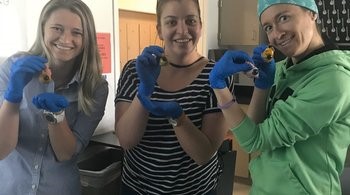
When asked what, if anything, she would change about her pathway to medicine, Amanda noted, “If I could travel back to the start of my journey, I would ask myself to trust my gut and my heart surrounding my career direction. I did eventually identify the right direction and path, and I'm thrilled to have found my place in medicine.”
Letters of Evaluation
Amanda selected five letter writers who knew her both personally and professionally to enhance her application. She approached two physicians with whom she had worked in the emergency department, her supervisor (an RN) from her time spent working in the emergency department, the executive director of HRAC, and her organic chemistry professor from her prerequisite classes. For each writer, Amanda prepared a brief list of items they could write about with regard to how they had worked with her. The admissions team at UCSOM also noted the strength of her letters of evaluation. “It was clear that each author knew her well and could speak to her abilities, further emphasizing how important human connection is to Amanda,” said Dr. Zehnder.
Interview
Amanda prepared for her interview by reviewing a list of 100 most commonly asked interview questions. She practiced answering questions with a partner and tested herself by coming up with answers on the spot. Additionally, she rehearsed behavioral interview questions, and came up with examples for times when she had faced conflict, leadership issues, ethical dilemmas, and other scenarios. Lastly, prior to the interview, she reviewed her AMCAS® application and reflected on her personal statement and experiences. As she dressed and got ready the morning of her interview, she had a solo dance party to shake off any last-minute jitters.
Her best interview tip for other applicants is to simply relax. “I think, in general, I’m glad I was able to be myself during my interviews. It sometimes takes me a while to feel comfortable in high-stakes situations like that, but I felt that I had prepared well and had good reason to be confident and be myself. Knowing that I’d be a great addition to the diversity and strength of the incoming class gave me the confidence to be myself and relax.”
Her detailed interview preparation paid off. “Amanda's interviewers felt she was enthusiastic and genuine. She demonstrated authentic passion for the activities that she participated in. Additionally, her interviewers thought she was an excellent communicator with strong self-insight,” noted Dr. Zehnder.
Amanda on Why She Chose University of Colorado School of Medicine
When Amanda interviewed at UCSOM, the school stood out to her because of its emphasis on developing compassionate and empathetic physicians. She also felt she could relate to the students she met on campus. “The students I encountered seemed happy with their experience and appeared to be well-rounded, thoughtful people who were not solely focused on research, clinical science, or competing with each other,” she said.
“The UCSOM mission emphasizes patient care, research, education,and service. I felt that my application as a well-rounded applicant hit all of these foci in a meaningful way and made me a strong candidate for admission,” said Amanda. “I demonstrated years of patient care experience, a year of work as a professional research assistant, a strong academic record in which I completed and excelled in meeting requirements for medical school admission independently and had a strong history of community service with several organizations serving vulnerable and marginalized groups,” she added. “I am grateful that the UCSOM recognized these qualities in me and felt confident that I could succeed as a medical student and future physician.”
Why University of Colorado School of Medicine Chose Amanda
Amanda’s multifaceted medical and vocational experience and unique perspective made her application stand out to the admissions committee. “Amanda's application demonstrated her commitment to service, cultural competence, capacity for improvement, and a strong desire to serve vulnerable populations. During her interview, she stood out as remarkably thoughtful with strong reasoning and communication skills, making her a natural fit for the University of Colorado School of Medicine,” said Dr. Zehnder.
“I think that my years of clinical experience and the way that I was thoughtful about integrating humanism into my practice as an EMT was a novel approach, and one that caught the eye of the school,” Amanda added. “I had a lot of experiences in service, clinical care, and research that made me an interesting and engaging addition to the class.”
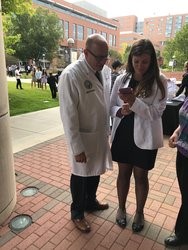
New section
Highlighted Competencies
Note: This section helps to illustrate how multiple competencies can be demonstrated across many experiences, activities, and parts of your application.
Appreciates how historical, sociocultural, political, and economic factors affect others’ interactions, behaviors, and well-being; values diversity; and demonstrates a desire to learn about different cultures, beliefs, and values.
Volunteered in South Africa through the Young Adults in Global Mission program.
Shows a commitment to something larger than oneself; demonstrates dedication to service and a commitment to making meaningful contributions that meet the needs of communities.
Volunteered numerous times to support the goals of service, advocacy, and humanism.
Supported people through difficult times as a minister; built trust and empathized with her patients.
Demonstrates accountability for performance and responsibilities to self and others; prioritizes and fulfills obligations in a timely and satisfactory manner; and understands consequences of not fulfilling one’s responsibilities to self and others.
Worked full time while taking science prerequisites.
Practices continuous personal and professional growth for improvement, including setting and communicating goals for learning and development; reflects on successes, challenges, and mistakes; pursues opportunities to improve knowledge and understanding; and asks for and incorporates feedback to learn and grow.
Joined a Certified Nursing Assistant Program to become a CNA; conducted research in University of Colorado's Emergency Department; worked with advisor to improve her MCAT study tactics.
Built relationships with her physician colleagues and with the communities and organizations in South Africa; developed a relationship with patients through honesty and respect.
Uses logic and reasoning to identify the strengths and weaknesses of alternative solutions, conclusions, or approaches to problems.
Professional experience, coursework.
Applies knowledge of the scientific process to integrate and synthesize information, solve problems, and formulate research questions and hypotheses; is facile in the language of the sciences and uses it to participate in the discourse of science and explain how scientific knowledge is discovered and validated.
Academic coursework; research assistant position; took courses in genetics in biochemistry.
Effectively conveys information to others by using written words and sentences.
Personal statement.
Applies knowledge and skill in the natural sciences to solve problems related to molecular and macro systems, including biomolecules, molecules, cells, and organs.
Coursework, CNA/EMT experience.
